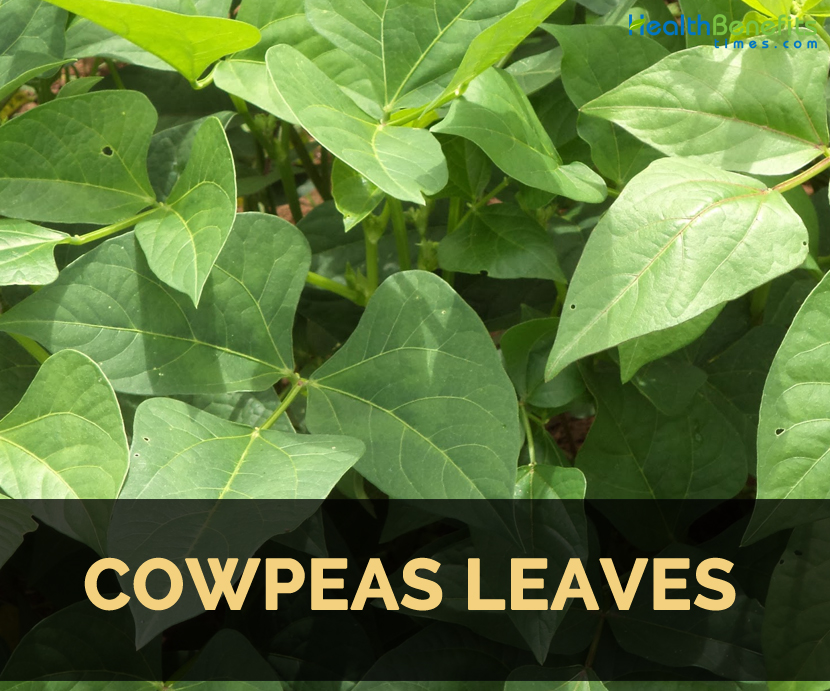| Cowpeas leaves Quick Facts | |
|---|---|
| Name: | Cowpeas leaves |
| Scientific Name: | Vigna sinensis (L.) Savi |
| Calories | 12 Kcal./cup |
| Major nutrients | Vitamin B1 (11.33%) Vitamin C (10.89%) Manganese (9.48%) Copper (9.11%) Vitamin B9 (8.00%) |
Nutritional experts have discovered that leaves encompass more nutritional value. Cowpeas leaves are an excellent source of vitamins as well as antioxidant serving multiple health benefits. Leaves have high content of fiber. The leaves are useful to treat diabetic, cardiovascular and overweight conditions.
Leaves
The plant bears alternate and 3-foliolate leaves with ovate stipules about 0.5 to 2 cm long usually spurred as the base. Petioles are grooved above, swollen at base measuring 15 to 25 cm long. Leaves have ovate to rhombic to lanceolate leaflets about 7-14 cm × 4-10 cm long. Apical ones are symmetrical, glabrous or slightly pubescent and basal ones are asymmetrical.
Culinary uses
- Boil the leaves or fry it and serve it with porridge.
- Sundry the boiled leaves to use later.
- In Botswana and Zimbabwe, leaves are boiled, kneaded to a pulp, squeezed into small balls and then dried.
References:
https://dengarden.com/gardening/Growing-Cowpeas-Black-Eyed-Peas-as-a-Vegetable
https://uses.plantnet-project.org/en/Vigna_unguiculata_(PROTA)
Comments
comments
